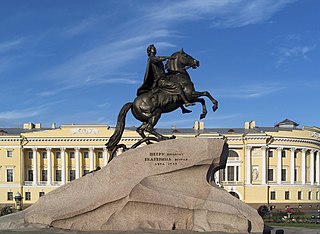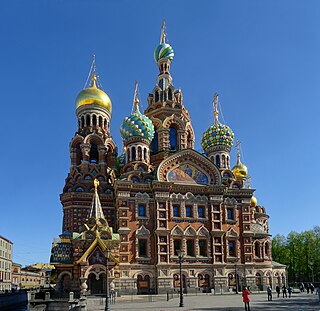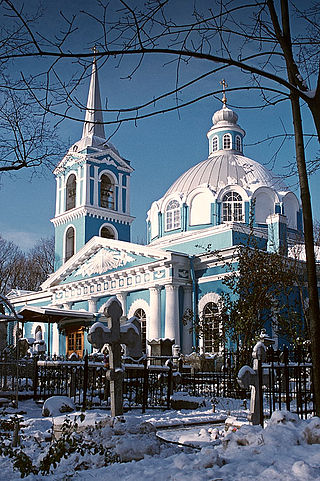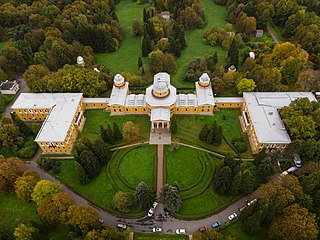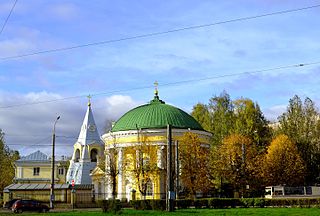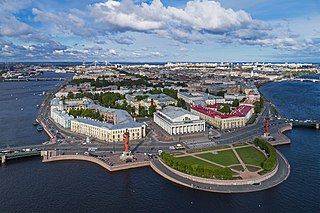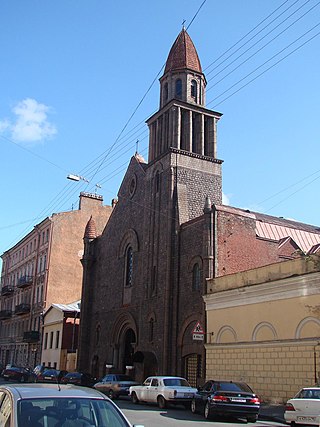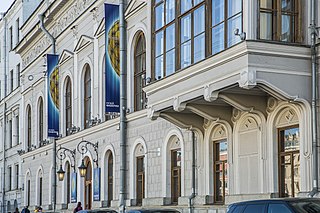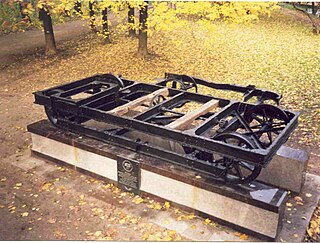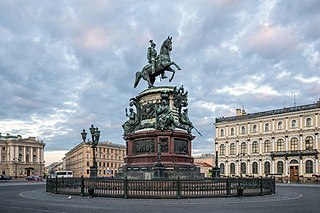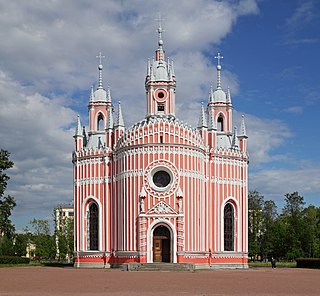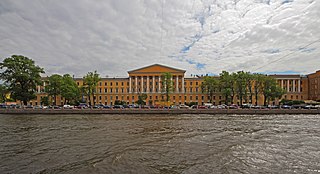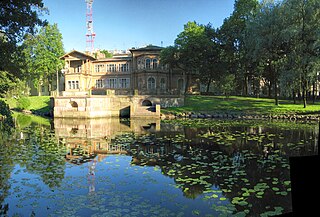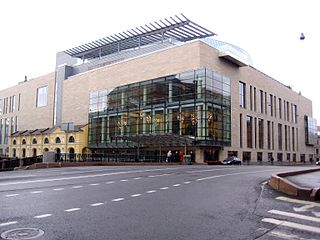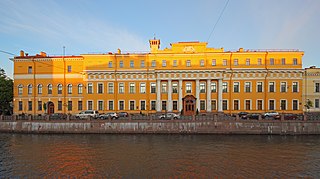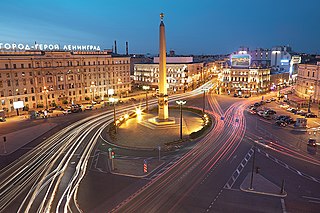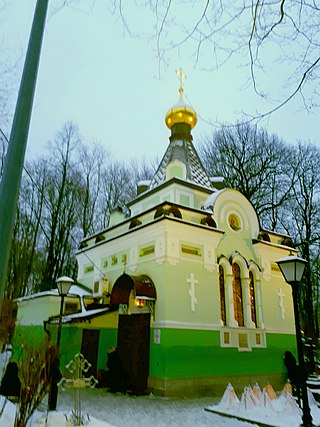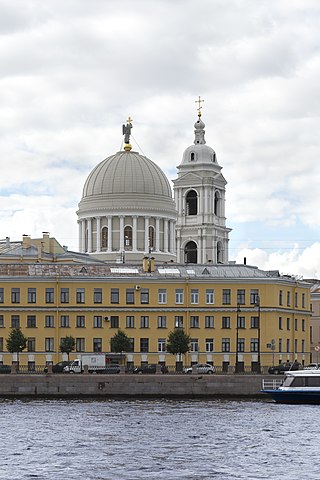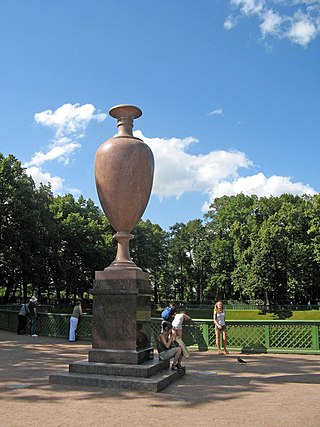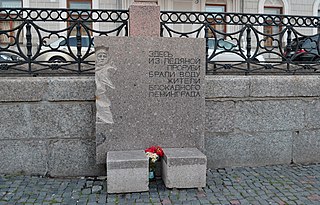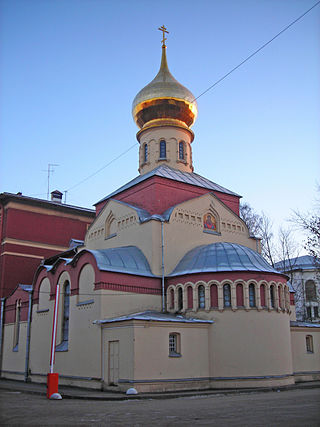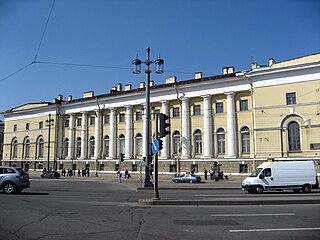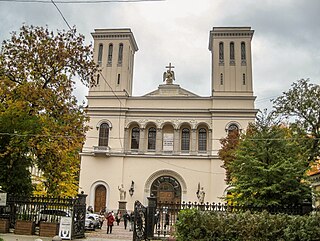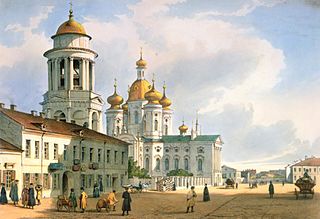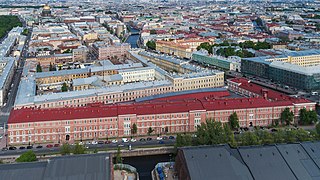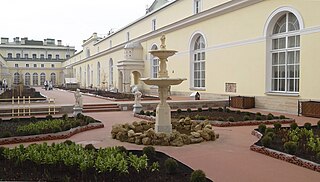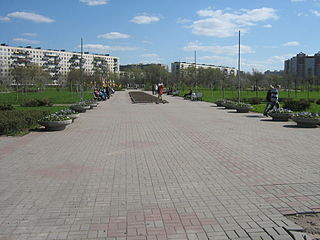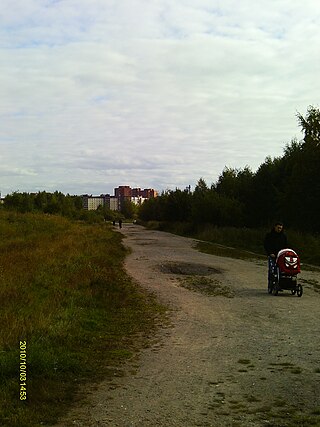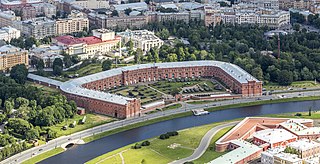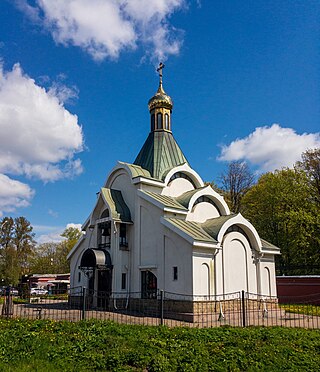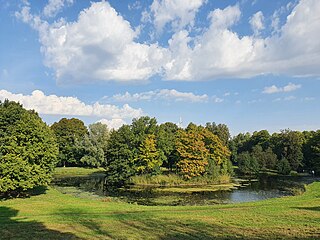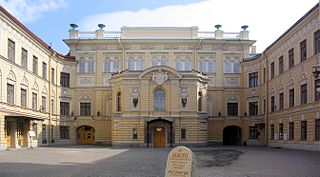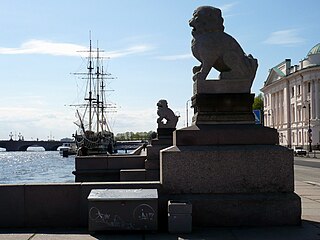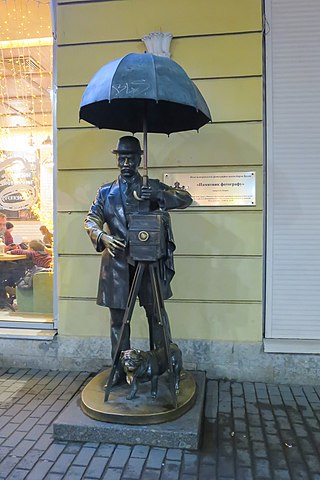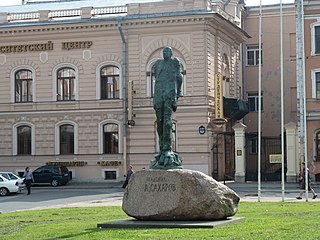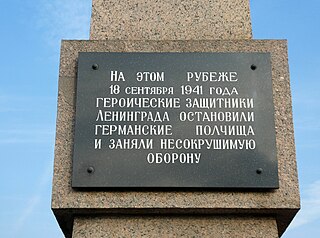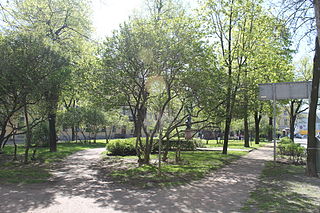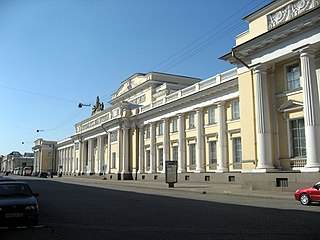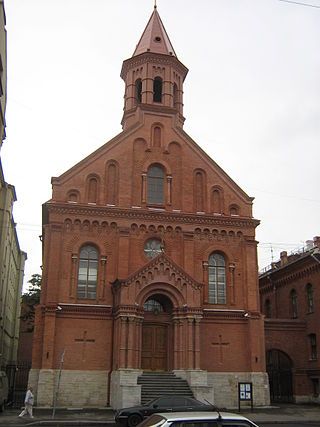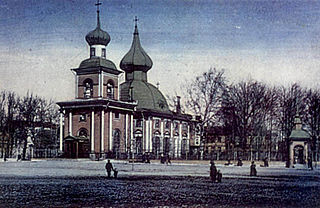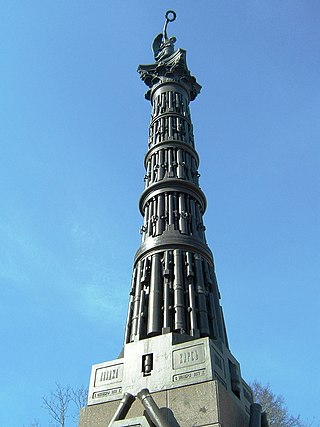100 Sights in Saint Petersburg, Russia (with Map and Images)
Legend
Premium Sights
Book tickets, guided tours and activities in Saint Petersburg.
Guided Free Walking Tours
Book free guided walking tours in Saint Petersburg.
Welcome to your journey through the most beautiful sights in Saint Petersburg, Russia! Whether you want to discover the city's historical treasures or experience its modern highlights, you'll find everything your heart desires here. Be inspired by our selection and plan your unforgettable adventure in Saint Petersburg. Dive into the diversity of this fascinating city and discover everything it has to offer.
Sightseeing Tours in Saint Petersburg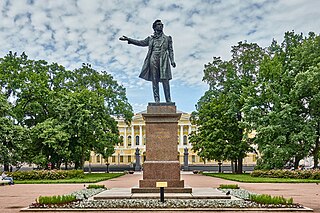
The monument to Alexander Sergeevich Pushkin by sculptor M. K. Anikushin and architect V. A. Petrov was erected on June 19, 1957 in Leningrad, on Arts Square in front of the building of the State Russian Museum. The opening of the monument was timed to coincide with the celebration of the 250th anniversary of Leningrad.
Wikipedia: Памятник А. С. Пушкину (Санкт-Петербург, площадь Искусств) (RU)
2. Апостол Павел
Paul also named Saul of Tarsus, commonly known as Paul the Apostle and Saint Paul, was a Christian apostle who spread the teachings of Jesus in the first-century world. For his contributions towards the New Testament, he is generally regarded as one of the most important figures of the Apostolic Age, and he also founded several Christian communities in Asia Minor and Europe from the mid-40s to the mid-50s AD.
3. Апостол Пётр
Saint Peter, also known as Peter the Apostle, Simon Peter, Simeon, Simon, or Cephas, was one of the Twelve Apostles of Jesus Christ and one of the first leaders of the early Christian Church. He appears repeatedly and prominently in all four New Testament gospels as well as the Acts of the Apostles. Catholic tradition accredits Peter as the first bishop of Rome—or pope—and also as the first bishop of Antioch.
4. Д. С. Щемлев
The Battle for Height 776, part of the larger Battle of Ulus-Kert, was an engagement in the Second Chechen War that took place during fighting for control of the Argun River gorge in the highland Shatoysky District of central Chechnya, between the villages of Ulus-Kert and Selmentauzen.
5. Peter the Great
The Bronze Horseman is an equestrian statue of Peter the Great in the Senate Square in Saint Petersburg, Russia. It was opened to the public on 7 (18) August 1782. Commissioned by Catherine the Great, it was created by the French sculptor Étienne Maurice Falconet. The statue influenced a 1833 poem of the same name by Alexander Pushkin, which is widely considered one of the most significant works of Russian literature. The statue is now one of the symbols of Saint Petersburg.
6. The Church of Our Savior on the Spilled Blood
The Church of the Savior on Spilled Blood is a Russian Orthodox church in Saint Petersburg, Russia which currently functions as a secular museum and church at the same time. The structure was constructed between 1883 and 1907. It is one of Saint Petersburg's major attractions.
7. Monument to the Victims of Political Persecution
The Solovetsky Stone is a monument to the victims of political repression in the Soviet Union and to those who have fought and fight for freedom. It stands in Troitskaya (Trinity) Square in Saint Petersburg, near several other buildings directly related to political repression in the Soviet era—the House of Tsarist Political Prisoners; the prison and necropolis of the Peter and Paul Fortress; and the Bolshoy Dom or headquarters of the NKVD, both in the city and the surrounding Leningrad Region. Nowadays, the Stone also serves as a focus for commemorative events and for gatherings related to current human rights issues.
8. Farnese Hercules
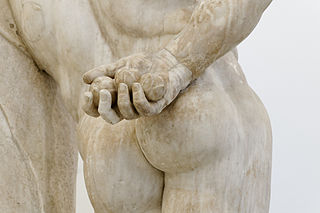
The Farnese Hercules is an ancient statue of Hercules made in the early third century AD and signed by Glykon, who is otherwise unknown; he was an Athenian but he may have worked in Rome. Like many other Ancient Roman sculptures it is a copy or version of a much older Greek original that was well known, in this case a bronze by Lysippos that would have been made in the fourth century BC. This original survived for over 1500 years until it was melted down by Crusaders in 1205 during the Sack of Constantinople. The enlarged copy was made for the Baths of Caracalla in Rome, where the statue was recovered in 1546, and is now in the Museo Archeologico Nazionale in Naples. The heroically-scaled Hercules is one of the most famous sculptures of antiquity, and has fixed the image of the mythic hero in the European imagination.
9. Церковь Смоленской иконы Божией Матери
The Church of the Smolensk Icon of the Mother of God on Vasilievsky Island is one of the oldest Orthodox churches in St. Petersburg. It is located at the Smolensk Orthodox cemetery on Vasilievsky Island. According to legend, Blessed Xenia of St. Petersburg participated in the construction of the church, secretly carrying bricks to the scaffolding at night.
10. Monument to Alexander III
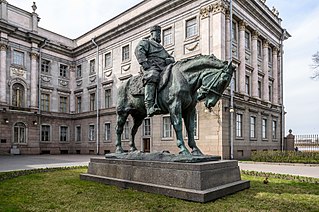
The Monument to Emperor Alexander III is a monument to the Russian Emperor Alexander III by sculptor Paolo Trubetskoy. It was erected in 1909 on Znamenskaya Square in St. Petersburg. Now it is located in the courtyard of the Marble Palace.
11. Дача Чернова
Chernov's Dacha, or Sosnovka, is a monument of the period of architectural eclecticism in the Nevsky district of St. Petersburg on the right bank of the Neva River, above the Volodarsky Bridge, opposite the River Station, which once stood. Address: Oktyabrskaya Embankment, house No 72.
12. House of Princess N. P. Golitsyna
The House of the Lady of Pikov is a mansion in St. Petersburg on Malaya Morskaya Street, 10, where Princess N. P. Golitsyna, who became the prototype of the countess in the story by A. S. Pushkin "The Queen of Spades", lived.
13. Pulkovo Astronomical Observatory
The Pulkovo Astronomical Observatory, officially named the Central Astronomical Observatory of the Russian Academy of Sciences at Pulkovo, is the principal astronomical observatory of the Russian Academy of Sciences. It is located 19 km south of Saint Petersburg on Pulkovo Heights 75 metres (246 ft) above sea level. It is part of the UNESCO World Heritage Site Historic Centre of Saint Petersburg and Related Groups of Monuments. It was formerly known as the Imperial Observatory at Pulkowo.
14. 152-мм пушка 2А36
The 2A36 Giatsint-B is a Soviet towed 152 mm field gun which entered service in 1975. The 2A36 is designed to suppress and destroy enemy manpower and equipment. It is also suitable for counter-battery fire. The gun can be used in various weather conditions and has been tested in temperatures ranging from −50 °C to 50 °C.
15. Вселенная воды

The Museum Complex "Universe of Water" is a museum in St. Petersburg. Located at 56 Shpalernaya Street. The main exposition of the museum is located in the water tower, built in the brick style in 1859-1863 by the architect I. A. Merts. The water tower, along with other buildings on the surrounding territory, is part of the complex of the former main station of the St. Petersburg city water pipelines and is an architectural monument of regional significance.
16. Saint Petersburg Mosque
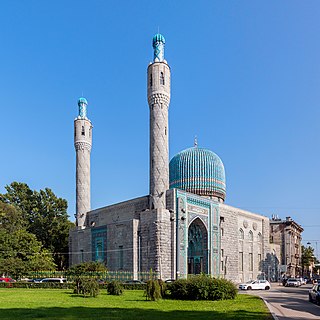
The Saint Petersburg Mosque, when opened in 1913, was the largest mosque in Europe outside Turkey. The mosque is situated in downtown St Petersburg. Its two minarets are 49 meters high and the dome is 39 meters high. It can accommodate up to five thousand worshippers.
17. Church of the Holy Trinity
The Church of the Holy Trinity "Kulich and Easter" is a parish Orthodox church in the Nevsky district of St. Petersburg. It belongs to the Nevsky Deanery of the St. Petersburg Diocese of the Russian Orthodox Church. It was built in the style of Russian classicism in 1785-1790 by the architect Nikolai Lvov.
18. Spit of the Vasilievsky Island
The Old Saint Petersburg Stock Exchange and Rostral Columns, located in Saint Petersburg in the Russian Federation, are significant examples of Greek Revival architecture. Designed by French architect Thomas de Thomon, and inspired by the Greek Temple of Hera at Paestum, the stock exchange was constructed between 1805 and 1810. The rostral columns erected on either side of the Stock Exchange were completed in 1811. The Old Saint Petersburg Stock Exchange is located at Birzhevaya Ploschad 4.
Wikipedia: Old Saint Petersburg Stock Exchange and Rostral Columns (EN)
19. St. Maria of Lourde Roman Catholic Church
The Church of Our Lady of Lurda is a Catholic church in the Liteiny District of St. Petersburg. It was built in 1903-1909 for the needs of the French Catholic community according to the project of architects L. N. Benois and M. M. Peretyatkovich. It was consecrated on December 5, 1909 by Bishop John Tseplyak. From 1938 to 1992, the temple remained the only functioning Catholic church in Leningrad.
Wikipedia: Храм Лурдской Божией Матери (Санкт-Петербург) (RU)
20. Fabergé Museum
The Fabergé Museum in Saint Petersburg is a privately owned museum in Saint Petersburg, Russia. It was established by Viktor Vekselberg and his Link of Times foundation in order to repatriate lost cultural valuables to Russia. The museum is located in central Saint Petersburg at the Naryshkin-Shuvalov Palace on the Fontanka River. The museum's collection contains more than 4,000 works of decorative applied and fine arts, including gold and silver items, paintings, porcelain and bronze. A highlight of the museum's collection is the group of nine Imperial Easter eggs created by Fabergé for the last two Russian Tsars.
21. Memorial Trolley
The memorial sign “Log” at the Admiralty Pond in the Moscow Victory Park was opened on September 8, 2001, on the 60th anniversary of the beginning of the blockade of Leningrad. It is a skeleton of a trolleys, hoisting with wheels to granite pedestals in the form of stylized rails. This is a genuine artifact located near this place of the brick-pemes plant No. 1, which during the Second World War in 1942-1943 was converted into a crematorium. In his furnaces on such trolleys, more than 100 thousand bodies of the victims of the blockade of Leningrad were burned. Their ashes were buried right on the shore of the pond, where there is a memorial sign. In 2001, the memorial zone of the former brick factory acquired the status of an object of cultural heritage of Russia.
22. Nicholas I
The Monument to Nicholas I is a bronze equestrian monument of Nicholas I of Russia on St Isaac's Square in Saint Petersburg, Russia. It was created by French sculptor Auguste de Montferrand and unveiled on July 7 [O.S. June 25] , 1859, the six-meter statue was considered a technical wonder at the time of its creation. It is one of only a few bronze statues with only two support points.
23. Церковь Симеона Богоприимца и Анны Пророчицы
The Church of Simeon and Anna is a parish Orthodox church in St. Petersburg, on the corner of Belinsky and Mokhovaya streets, an architectural monument, one of the oldest churches in the city. It belongs to the Central Deanery of the St. Petersburg Diocese of the Russian Orthodox Church. Former Chapter Church of the Order of St. Anne.
Wikipedia: Церковь Симеона и Анны (Санкт-Петербург) (RU), Website
24. Chesme Church
The Chesme Church, is a small Russian Orthodox church at 12 Lensoveta Street, in Saint Petersburg, Russia. It was built by the Russian court architect Yury Felten in 1780, at the direction of Catherine the Great, Empress of Russia. A memorial church, it was erected adjacent to the Chesme Palace between Saint Petersburg and Tsarskoye Selo to commemorate the anniversary of Russia's 1770 victory over Turkish forces in Chesme Bay in the Aegean Sea during the Russo-Turkish War of 1768–1774.
25. Дом Зингера
Singer House, also widely known as the House of the Book, is a historic building in Saint Petersburg, Russia. It is located at the intersection of Nevsky Prospekt and the Griboyedov Canal, directly opposite the Kazan Cathedral. It is recognized as a historical landmark and has official status as an object of Russian cultural heritage.
26. 5 углов

Five Corners is the unofficial name of the intersection in St. Petersburg, formed by the intersection of Zagorodny Prospekt with Razyezzhaya, Rubinstein and Lomonosov streets. The crossroads has existed since the 1760s.
27. Obukhovskaya Hospital
The Obukhov Hospital is one of the first city hospitals in Russia. Currently, the building of the former women's building in St. Petersburg houses the clinic of naval therapy of the S.M. Kirov Military Medical Academy, most of the buildings are closed for reconstruction.
28. Lopukhinsky Garden
Lopukhinsky Garden is a garden in St. Petersburg, a monument of architecture and history of regional significance. It is located on the odd-numbered side of Kamennoostrovsky Prospekt between Akademika Pavlova Street and Malaya Nevka. The area of the garden is 5.7 hectares.
29. Mariinsky II
The Mariinsky Theater Second Stage is the second part of a theatre complex which is made up of the original 1860 Mariinsky Theatre and the 2007 Mariinsky Theatre Concert Hall. The Second Stage has been completed and a gala concert celebrating the opening, and featuring performers Plácido Domingo, Rene Pape and Anna Netrebko, was presented on 2 May 2013. The concert also celebrated the sixtieth birthday of musical director Valery Gergiev.
30. The Winter Palace of Peter the Great
The Winter Palace of Peter I is the personal residence of Emperor Peter I, erected on the Neva embankment near the Winter Canal, an architectural monument of the early XVIII century, partially preserved and located in the building of the Hermitage Theater, included in the museum complex of the State Hermitage.
31. Юсуповский дворец
The Palace of the Yusupovs on the Moika, known as the Moika Palace or Yusupov Palace, is a former residence of the Russian noble House of Yusupov in St. Petersburg, Russia, now a museum. The building was the site of Grigori Rasputin's murder in the early morning of December 17, 1916. Sometimes called the Moika Palace to tell it apart from other palaces of the same family in Saint Petersburg, though it is not the only palace on this river in the city.
32. Церковь Воскресения Христова
The Church of the Resurrection of Christ is an Orthodox church on Vasilievsky Island in St. Petersburg, on the odd-numbered side of Kamskaya Street, at the entrance to the Smolensk Orthodox Cemetery. It belongs to the St. Petersburg diocese, assigned to the Smolensk Church. The temple is stylized as Moscow Baroque. Built in 1903, it operated until 1930, after which it was closed and used for various economic needs until 1991. From 1991 to the present, it has been restored. It is open daily, services are held daily.
Wikipedia: Воскресенская церковь на Смоленском кладбище (RU)
33. Ivan Krylov
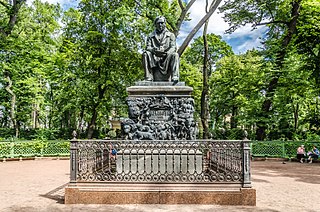
The Krylov Memorial was erected in 1855 near the main alley of the Summer Garden in St. Petersburg. It is a bronze statue of a seated fabulist. The monument is one of the first monuments to Russian writers and the first to be erected in St. Petersburg.
34. Собор Воздвижения Креста Господня
The Cross-Western Cossack Sobor is the parish Orthodox Church in St. Petersburg at the intersection of Ligovsky Prospekt and the Obvodny Canal, one of the oldest parishes of St. Petersburg. It is part of the central deanery of the St. Petersburg diocese of the Russian Orthodox Church
Wikipedia: Крестовоздвиженский собор (Санкт-Петербург) (RU), Vk, Website
35. Leningrad Hero City Obelisk
Leningrad Hero City Obelisk is a monument in the shape of an obelisk located in Vosstaniya Square in Saint Petersburg, Russia, which was known as Leningrad from 1924 to 1991. It was installed on Victory Day of May 1985 to commemorate the fortieth anniversary of the Red Army's victory in the German-Soviet War. The monument was designed by architects Vladimir Lukyanov and A. I. Alymov.
36. Часовня св. Блаженной Ксении Петербужской
The Chapel of St. Xenia the Blessed is an Orthodox chapel in St. Petersburg. It is located in the Vasileostrovsky district at the Smolensk Orthodox cemetery. Open daily from 8.00 to 19.00. It is assigned to the Church of the Smolensk Icon of the Mother of God. In the chapel under a bushel are the relics of Blessed Xenia of St. Petersburg.
37. Церковь святой великомученицы Екатерины
The Church of the Holy Great Martyr Catherine is an Orthodox church in St. Petersburg on Vasilievsky Island. It belongs to the St. Petersburg diocese of the Russian Orthodox Church, is part of the Vasileostrovsky deanery.
Wikipedia: Церковь Святой Екатерины у Тучкова моста (RU), Website
38. Научно-исследовательский музей Российской академии художеств
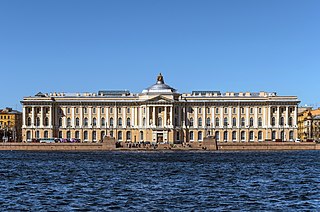
The Research Museum of the Russian Academy of Arts, the Museum of the Academy of Arts is the first art museum in the building of the Imperial Academy of Arts on the University Embankment of Vasilievsky Island. It claims to be the oldest art museum in Russia.
Wikipedia: Музей Российской академии художеств (RU), Vk, Website
39. Leningrad Siege Loudspeaker
The “blocked reproducer” is a commemorative sign in St. Petersburg on the corner of the building on Nevsky Prospekt 54/ and Malaya Sadovaya Street, where during the years of the blockade a loudspeaker was installed, transferring the news from the front.
40. Порфировая ваза
A porphyry vase is a work of stone-carving art installed in the Summer Garden in St. Petersburg. It is located at the entrance to the garden from the Moika River embankment on the bank of the Karpiev Pond.
41. Блокадная прорубь
“Blocade Promobube” is a memorial sign in St. Petersburg on the descent of the Fontanka River embankment, near house 21, on the place where during the years of the blockade there was an ice hole, to which the inhabitants of the besieged city went for water.
42. Церковь Покрова Пресвятой Богородицы
The Church of the Intercession on Borovaya Street is an Orthodox church in St. Petersburg. It belongs to the St. Petersburg diocese of the Russian Orthodox Church. Since 2012, it has had the status of a metochion of the Antonievo-Dymsky Monastery.
43. Zoological Museum of the Zoological Institute of the Russian Academy of Sciences
The Zoological Museum of the Zoological Institute of the Russian Academy of Sciences is a Russian museum devoted to zoology. It is located in Saint Petersburg, on Universitetskaya Embankment. It is one of the ten largest nature history museums in the world.
Wikipedia: Zoological Museum (Saint Petersburg) (EN), Website
44. Tovstonogov Great Drama Theater
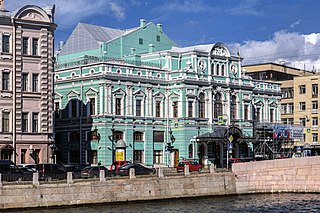
Tovstonogov Bolshoi Drama Theater, formerly known as Gorky Bolshoi Drama Theater (1931–1992), often referred to as the Bolshoi Drama Theater and by the acronym BDT, is a theater in Saint Petersburg, that is considered one of the best Russian theaters. The theater is named after its long-time director Georgy Tovstonogov. Andrey Moguchy was the artistic director of the theater in 2013–2023 years.
Wikipedia: Tovstonogov Bolshoi Drama Theater (EN), Website, Telegram, Vk, Whatsapp
45. Mariinsky Theatre Concert hall
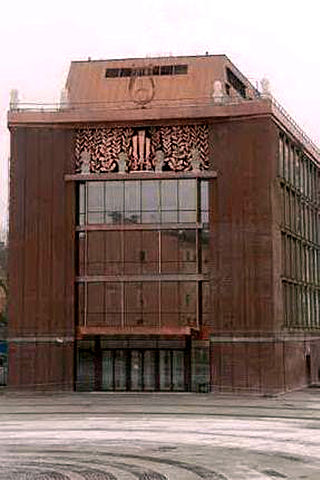
The Concert Hall of the Mariinsky Theatre is a concert hall complex in St. Petersburg, located in two buildings: the building of the Mariinsky Theatre Decoration Workshops, rebuilt in the 2000s, at 20 Pisareva Street, and the Southern Building connected to it at 39 Dekabristov Street.
46. Государственный мемориальный музей А. В. Суворова
Suvorov Memorial Museum in Saint Petersburg, Russia is a military museum dedicated to the memory of Generalissimo Alexander Suvorov (1729–1800). It was founded in 1900 to commemorate the century of Suvorov's death. In 1904, the museum moved into the present building, purpose-built to a design by Alexander von Hohen in a Russian Revival style.
47. Памятник собаке Павлова
The Monument to the Dog is a monument with a fountain erected in honor of scientific experiments and experimental animals in the garden of the Institute of Experimental Medicine on Aptekarsky Island in St. Petersburg.
48. Lutheran Church of Saint Peter and Saint Paul
The Lutheran Church of Saint Peter and Saint Paul is a Lutheran church in the center of St. Petersburg on Nevsky Prospekt. Divine services are held regularly on Sundays from 10:30 in German and Russian. The rector of the parish, the Rev. Michael Schwarzkopf, is also the head of the North-West Probate of the Evangelical Lutheran Church of the European Part of Russia. Also in the church building is the office of the Archbishop of the Union of Evangelical Lutheran Church in Russia, Ukraine, Kazakhstan and Central Asia.
Wikipedia: Lutheran Church of Saint Peter and Saint Paul (EN), Vk, Facebook, Website
49. Mansion-museum of G.R.Derzhavin
The Museum-Estate of G. R. Derzhavin is the mansion of Gavriil Romanovich Derzhavin in St. Petersburg, on the Fontanka Embankment, 118, next to Derzhavinsky Lane. Since 2003, it has been a literary and memorial museum, a branch of the All-Russian Museum of A. S. Pushkin.
50. Собор Владимирской иконы Божией Матери
Cathedral of the Vladimir Icon of the Mother of God is a Russian Orthodox cathedral, dedicated to Our Lady of Vladimir and located at 20 Vladimirsky Prospect, St. Petersburg, Russia. The avenue takes its name from the church.
Wikipedia: Cathedral of the Vladimir Icon of the Mother of God (EN), Website, Vk
51. Central Naval Museum
Central Naval Museum is a naval museum in St Petersburg, Russia, reflecting the development of Russian naval traditions and the history of the Russian Navy. The museum’s permanent display includes such relics as the Botik of Peter the Great, Catherine II’s marine throne, trophies captured in sea battles, and the personal belongings of prominent Russian and Soviet naval commanders. The collection includes paintings by Ivan Aivazovsky, Alexey Bogolyubov, Lev Lagorio and other marine artists, ship sculpture, navigational instruments, naval equipment and machinery from the 17th to 20th centuries and numerous models of ships.
52. Большой концертный зал «Октябрьский»
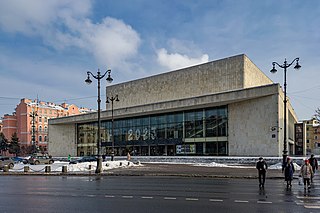
The Oktyabrskiy Big Concert Hall (BKZ) (Russian: Большой концертный зал «Октя́брьский», romanized: Bol'shoy kontsertnyy zal «Oktyábr'skiy», Big Concert Hall "October") is a theatre located in Saint Petersburg, Russia. It hosts variety actors, rock musicians, and also dance and ballet collectives. Located in the Greek Square, it opened October 1967, inaugurated 50 years after the October Revolution.
Wikipedia: Oktyabrsky Concert Hall (EN), Website, Telegram, Vk, Instagram
53. Висячий сад
The hanging garden of the Maly Hermitage-the component of the small Hermitage building, which is part of the museum complex of the State Hermitage, was built in 1764-1773 by the architects of J. B. Wallen-dramat and Yu. M. Felten, rebuilt in 1841 by V.P. Stasov. The hanging garden is located at the level of the second floor, above the premises of the former stables and the arena, and occupies the space between the galleries connecting the northern and southern pavilions of the small Hermitage.
54. Menshikov Palace

The Menshikov Palace is a Petrine Baroque edifice in Saint Petersburg, situated on Universitetskaya Embankment of the Bolshaya Neva on Vasilyevsky Island. Since 1981, it has served as a public museum, a branch of the Hermitage Museum.
Wikipedia: Menshikov Palace (Saint Petersburg) (EN), Website
55. Экипажу подводной лодки Щ-323
Shch-323 is a Soviet submarine of the Shchuka class. It was part of the Baltic Fleet, the first to sink a ship during the Soviet-Finnish War. She died in 1943 on a mine while trying to break through the naval blockade of Leningrad.
56. Steregushchy Torpedo Boat
The Monument to the Steregushchy is a monument to the heroic death of the destroyer Steregushchy in 1904 in the battle of the Russo-Japanese War. It is the only St. Petersburg monument in the Art Nouveau style and the last one built before the revolution. It was opened in May 1911.
57. Водонапорная башня завода «Красный гвоздильщик»
The water tower of the Red Clovenzer plant is located in St. Petersburg, at the 25th line of the Vasilyevsky Island, on the corner with the oil channel. The constructivism and the Soviet avant -garde is recognized as an example.
Wikipedia: Водонапорная башня завода «Красный гвоздильщик» (RU)
58. Saint Mary Church
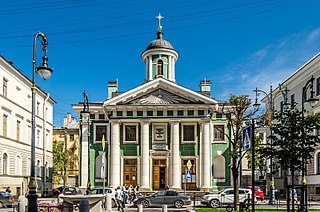
The Evangelical Lutheran Church of Saint Mary is an Evangelical Lutheran church located in Saint Petersburg, Russia. It was built in 1805 and refurbished in 2002. Its address is: Bolshaya Konyushennnaya Ulitsa 8A, off Nevsky Prospekt. It is usually called the Finnish church and is one of the oldest and largest Protestant churches in Russia.
Wikipedia: Evangelical Lutheran Church of Saint Mary (EN), Website
59. Мало-Михайловский дворец
The Palace of Mikhail Mikhailovich is a palace in the center of St. Petersburg, an architectural monument. It was built according to the project of Maximilian Messmacher. It is called a palace, although it was never used for its intended purpose, since Grand Duke Mikhail Mikhailovich was expelled from Russia after his marriage to Sophia Merenberg.
60. Александровские ворота
Alexandrovsky Vorota is the former gate of the Okhta Gunpowder Plant in St. Petersburg. They were built according to the project of Fyodor Ivanovich Demertsov in 1806. A monument of classicist architecture. They are located on the bank of the Okhta River, in the eastern part of the Big Ilyinsky Garden, not far from the Okhta dam.
61. сад «Нева»
Neva is a garden in the Krasnogvardeisky district of St. Petersburg. It is bounded by the Revolution Highway, Piskaryovsky Prospekt, Sredneokhtinsky Prospekt and Polyustrovsky Prospekt. The area of the garden is 11.19 hectares.
62. Apple orchard
The Apple Orchard is a park area in the Frunzensky District of St. Petersburg, between part of Turku Street (to the south) and Belgradskaya Street (to the east). From the northeast, the park is bounded by houses No 1/1 on Turku Street, from the east No 16 and 20 on Belgradskaya Street, and from the south by house No 26/9 on the same Belgradskaya Street. Houses 26/7, 26/8 and 26/9 on Belgradskaya Street were built on the former southern and southwestern part of the garden. The house 1/1 on Turku Street was built on the former north-eastern territory of the garden.
63. Яблоновский сад
Yablonovsky Garden is a small garden in the Nevsky District of St. Petersburg. It is located on the right bank of the Okkervil River, surrounded by Voroshilov Street, Latyshskikh Strelkov Street and Rossiysky Avenue.
64. Ancient Egyptian sphinx
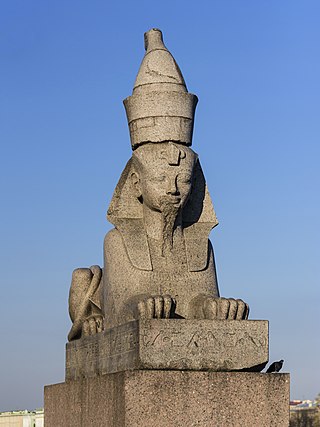
Quay with Sphinxes is a quay at the Universitetskaya Embankment in Saint Petersburg, in front of the Imperial Academy of Arts. It is remarkable for the two ancient sphinxes that were brought from Egypt to Russia at the height of Egyptomania in 1832. The quay was completed in 1834.
65. Artillery Museum
The Military Historical Museum of Artillery, Engineers and Signal Corps, also known simply as the Artillery Museum, is a state-owned military museum in Saint Petersburg, Russia. Its collections – consisting of Russian military equipment, uniforms and decorations – are hosted in the Kronverk situated on the right bank of the Neva near Alexander Park. The museum is managed by the Russian Ministry of Defence.
Wikipedia: Military Historical Museum of Artillery, Engineers and Signal Corps (EN), Website
66. Жертвам политических репрессий
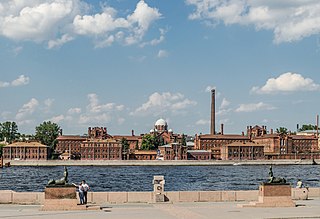
Memorial to the Victims of Political Repression in Saint Petersburg is a monument dedicated to millions of people who suffered from state terror in the USSR. It is located at the descent to the water on the Voskresenskaya Embankment of the Neva River, separating it from the legendary Kresty Prison, where many political prisoners were held. The central element of the monument is a pair of sculptures of "metaphysical sphinxes" by artist Mihail Chemiakin. Executed in the spirit of modernism, they feature - their faces are divided vertically into two halves. Facing the residential buildings on the embankment, the sphinxes have profiles of young female faces, and facing the Kresty prison on the opposite bank are exposed skulls. This symbolizes the tragic division of the people during the Soviet years. Around the perimeter of the sculpture pedestals are plaques with texts dedicated to Soviet repression, written by famous writers and dissidents. Between the sphinxes is a structure made of granite blocks in the form of an early Christian cross with a prison window and a crown of thorns made of barbed wire. The architectural solution of the monument was designed by Vyacheslav Bukhayev and Anatoly Vasiliev. The memorial was opened at the initiative of the sculptor and city authorities on April 28, 1995.
Wikipedia: Memorial to the Victims of Political Repression (Saint Petersburg) (EN)
67. Park Babushkina
The Park of Culture and Recreation named after I. V. Babushkin is one of the first parks in the Nevsky district of St. Petersburg. It is located on the banks of the Neva River in a block bounded by Babushkina, Farforovskaya streets and Zheleznodorozhny and Obukhovskoy Oborony avenues.
68. Церковь Казанской иконы Божией Матери
The Church of the Kazan Icon of the Mother of God at the Krasnenky Cemetery is an Orthodox church in the Kirovsky district of St. Petersburg, near the Krasnenky cemetery. The main temple of the Kirov deanery of the St. Petersburg diocese of the Russian Orthodox Church.
Wikipedia: Храм Казанской иконы Божией Матери у Красненького кладбища (RU), Website
69. Trubetskoy Bastion
The Trubetskoy Bastion is one of the two western bastions of the Peter and Paul Fortress in St. Petersburg, facing Vasilievsky Island. It is connected to the Naryshkin Bastion by the Catherine Curtain Wall, and to Zotov by the Vasilyevskaya Curtain Wall. This flank of the bastion has an additional cover for the gun embrasures - the orillon, in which there was a hidden passage - sortia. From the west, the bastion is covered by the Alekseevsky ravelin, as well as by a semi-counterguard, with which it is connected by a dam - a batardo.
70. Museum of Arctic and Antarctic

The Russian State Arctic and Antarctic Museum is a museum in St. Petersburg, Russia. It was established in November 1930 as part of the Soviet Arctic and Antarctic Research Institute, but was not opened until six years later.
71. Церковь Серафима Саровского
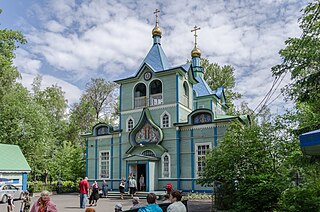
The Church of St. Seraphim of Sarov is a wooden Orthodox church in the Primorsky district of St. Petersburg. It is located at the Seraphimovskoye cemetery in the historical district of Staraya Derevnya.
Wikipedia: Церковь Серафима Саровского на Серафимовском кладбище (RU)
72. Сад Дружбы
The Garden of Friends is a Chinese garden located near houses No 15-17 on Liteiny Prospekt in St. Petersburg. It was created at the beginning of the XXI century for the three hundredth anniversary of the city.
73. Демидовский парк
Demidovsky Park, also known as the park of the Litania estate, Ebsworth's dacha "Litania", and as the Lenfilm Park, is an old landscape park of the XVIII century, located in the south-west of St. Petersburg in the Krasnoselsky district. It is located in Sosnova Polyana on the historical territory of one of the former Demidov estates on the Peterhof road. It is classified as an object of cultural heritage reg. No 781620554230005 (EGROKN) in 1992. The northwestern part of the park, known as "Chidson's Dacha", as well as the entire water system of the park, are separately classified as objects of cultural heritage of Russia.
74. Academic Chapel
The St. Petersburg State Academic Capella, is the oldest active Russian professional musical institution with a history dating back to 1479. It is based in the city of Saint Petersburg. It has had various names over the years, including "St. Peterburg Court Chapel" and the "Glinka State Choir of St. Petersburg".
Wikipedia: St. Petersburg State Academic Capella (EN), Website
75. Ши-Цза
Shi-Tza (Shi-dza)-a pair of granite mythological lions, installed during the descent to the Neva on the Petrovskaya Embankment in St. Petersburg. Sculptures have a height of 4.5 m and weight 2.5 tons each. On both pedestals, the inscription was carved: “Shi-Tzu from the city of Girin in Manchuria was transported to St. Petersburg in 1907. The gift of the general from the infantry N. I. Grodekov. " The other pair of sculptures of such lions appeared in St. Petersburg by the three hundredth anniversary of the city at the beginning of the XXI century in the Central District of the city on Litein Prospekt in the Shanghai Garden of the Shanghai Garden created there-see the Garden of Friendship (St. Petersburg).
76. Петровская Акватория
Petrovskaya Aquatoria is a historical model museum in St. Petersburg, made on a scale of 1:87 on an area of more than 500 m². The total area of the museum is 1100 m². The model contains the most significant buildings on the banks of the Neva and the Gulf of Finland, erected in the XVIII century. A feature of the museum is the recreation of the water area of the Neva and the Gulf of Finland using real water, as well as the use of its own patented technical developments. The museum is located at the intersection of Malaya Morskaya Street and Kirpichny Lane, in the building of the Admiral shopping mall.
77. Saint-Petersburg Photographer
The Monument to the St. Petersburg Photographer is a bronze monument on Malaya Sadovaya Street in the center of St. Petersburg, erected on January 25, 2001 according to the project of L. V. Domrachev and B. A. Petrov. It is a 2.5-meter figure of a photographer who is preparing for a shoot. The photographer is holding an open umbrella, and an English bulldog is hiding under the tripod on which the camera is installed.
78. Karl Bulla Photography Museum
The Karl Bulla Foundation for Historical Photography is a private photo salon in the center of St. Petersburg, one of the oldest in Russia. The main task of the foundation is to study and popularize Russian photography of the 19th and first half of the 20th century.
Wikipedia: Фонд исторической фотографии имени Карла Буллы (RU), Website, Vk
79. Невская застава
The Nevskaya Zastava Museum is a museum of the Nevsky District of St. Petersburg. Founded in 1967, since 2013 it has been a member of the Union of Museums of Russia. The exposition covers the historical period from the XVIII to the XX centuries, includes the memorial room of the worker V. A. Shelgunov, who was an associate of V. I. Lenin. The room retains the furnishings of the early 20th century, which gives a clear idea of the life of the working class and the environment of underground revolutionaries. The museum is a district historical and cultural center and is actively working with the local community.
Wikipedia: Невская застава (музей) (RU), Vk, Instagram, Website
80. Andrei Sakharov
The monument to Andrei Sakharov in St. Petersburg is located on the square of the same name on Vasilievsky Island, near St. Petersburg State University and the Library of the Russian Academy of Sciences. The sculpture by the artist L. K. Lazarev was installed on a granite block-pedestal on the night of May 3-4, 2003, the opening took place on May 5. On the front side of the boulder there is an inscription: "Academician A. Sakharov".
81. Обелиск воинского захоронения «Лигово»
"Kirovsky Val" is a memorial complex as part of the "Green Belt of Glory". He marked the line in the Kirov district, where Soviet soldiers, sailors and militia stopped the fascist offensive in September 1941. It was built by the workers of the Kirovsky district of Leningrad.
82. Памятник бравому солдату Швейку

The Monument to the Brave Soldier Seamstress is a monument erected on Balkan Square in St. Petersburg to the soldier Švejk, a satirical character, the main character of the novel by the Czech writer Jaroslav Hašek "The Adventures of the Good Soldier Švejk".
Wikipedia: Памятник бравому солдату Швейку (Санкт-Петербург) (RU)
83. Лермонтовский сквер
The square in front of the former building of the Nikolaev Cavalry School is located in the Admiralteysky district of St. Petersburg and is a monument of landscape art. The area of the square is 0.37 hectares.
84. Каменноостровский театр

The Kamenny Island Theatre is a wooden theatre on the grounds of the Kamennoostrovsky Palace, Kamenny Island, Saint Petersburg, Russia. It is the only surviving wooden theatre in St. Petersburg, and one of the few remaining in Europe. The theatre is a world heritage site protected by UNESCO.
Wikipedia: Kamenny Island Theatre (EN), Website, Telegram, Vk, Whatsapp
85. сквер Товстоногова

Tovstonagov Square is a square in the Petrogradsky District of Saint Petersburg, Russia. It is located inside the residential development of the Petrograd Side, bounded by houses No 1, 3 and 5 on Troitskaya Square, No 1 and 3 on Kuibyshev Street and No 4 on Petrovskaya Embankment.
86. Russian Museum of Ethnography
The Russian Museum of Ethnography is a museum in St. Petersburg that houses a collection of about 500,000 items relating to the ethnography, or cultural anthropology, of peoples of the former Russian Empire and the Soviet Union.
87. Museum of Theatre and Music
The St. Petersburg State Museum of Theater and Music is the first museum in Russia dedicated to the history of Russian theater. The museum's collection includes 450,000 exhibits that tell about the art of drama, opera and ballet during its existence in Russia. The museum is located in the former building of the Directorate of the Imperial Theaters, which is part of the architectural ensemble of Ostrovsky Square, designed by Karl Ivanovich Rossi in the XIX century.
Wikipedia: Санкт-Петербургский музей театрального и музыкального искусства (RU), Website, Telegram, Vk, Instagram
88. Эстонская церковь Святого Иоанна
St. John's Church is a Protestant church in St. Petersburg, Russia. The church is situated at the address 54 ulitsa Dekabristov, close to the Mariinsky Theater. Founded in 1859 to serve the Estonian community living in the city at that time, it is considered Estonia's symbol of independence. It was the place where in 1888 Jakob Hurt made the call to resist the Tsarist government's russification policy and on March 26, 1917, 40,000 Estonians began their march to Tauride Palace demanding national autonomy.
89. Museum of circus arts
The St. Petersburg Museum of Circus Art is the world's first museum dedicated to the history of the circus. The museum is located in the building of the Great St. Petersburg State Circus on the Fontanka. Currently, the doors of the museum on the Fontanka are closed due to the overhaul of the circus building. The exposition moved to the House of Circus Artists hotel at 6 Inzhenernaya Street, where it works in the format of an exhibition and a library.
90. сквер Мациевича
Matsievich Square is a green area between houses No 11 and No 13 on Aerodromnaya Street and house No 6 on Bogatyrsky Prospekt in the Primorsky District of St. Petersburg on the former Commandant's Airfield.
91. Chapel of the Holy Trinity
The Old Trinity Cathedral was the oldest church in St. Petersburg, Russia. It was there that Peter the Great celebrated the end of the Great Northern War in 1721 and was proclaimed the first Emperor of All Russia. It was one of the city's most cherished monuments until the Soviets ordered its destruction in 1933. The site on the Neva River bank is commemorated by a chapel.
92. Column of Glory
The Column of Glory, sometimes called the Russo-Turkish War Memorial column, is a victory memorial situated in the immediate surroundings of the Trinity Cathedral in Saint Petersburg, Russia. Completed in 2004 as a gift at the 300th anniversary of the city in 2003, the monument is an exact replica of a monument from 1886 that was destroyed by Soviet leader Joseph Stalin in 1929.
93. John gates
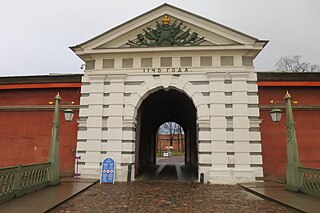
St. John's Gate is a gate in the Ioannovsky ravelin of the Peter and Paul Fortress in Saint Petersburg, Russia. They provide passage from the Ioannovsky Bridge into the fortress through the Petrovsky Gate.
94. В. П. Алексеев
The monument to V. P. Alekseev is a monument to Vasily Petrovich Alekseev, a worker of the Putilov plant, a member of the Narva District Committee of the RSDLP, one of the organizers of the Petrograd Socialist Union of Working Youth, a participant in the Civil War, chairman of the Gatchina Revolutionary Committee in 1919.
95. Nikolay Przhevalsky
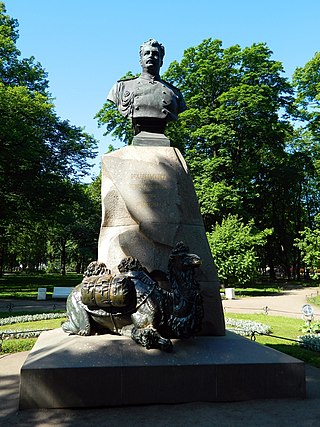
The monument to Nikolai Mikhailovich Przhevalsky in St. Petersburg is located in the Alexander Garden in the Admiralty district of the city. The monument is an object of cultural heritage of federal significance.
96. Gosudarev Bastion
The State Bastion is one of the two eastern bastions of the Peter and Paul Fortress in St. Petersburg, facing the Neva River. It is connected to the Naryshkin Bastion by the Neva Curtain Wall, and to Menshikov by the Petrovskaya Curtain Wall. From the east, the bastion is covered by the Ioannovsky ravelin and a semi-counterguard.
97. Pulkovo Meridian
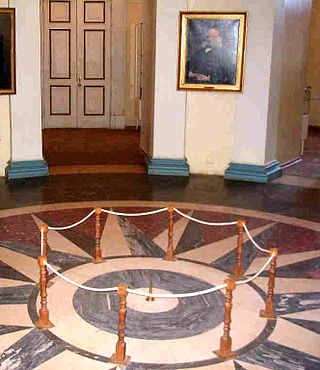
The Pulkovo meridian, which passes through the center of the main building of the Pulkovo Observatory and is at 30°19′34″ east of Greenwich, was the point of departure for all former geographical maps of Russia.
98. Нижним чинам Лейб-Гвардии Финляндского полка
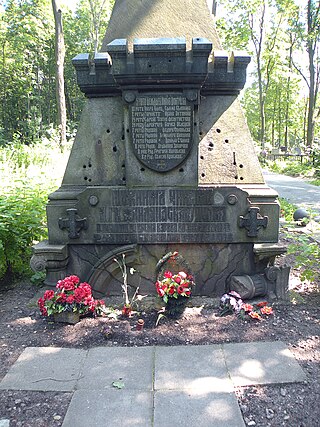
The monument to the Finnish heroes was installed at the Smolensk Orthodox Cemetery in St. Petersburg as a tribute to the lower ranks of the Life Guards of the Finland Regiment, who died as a result of a terrorist act in the Winter Palace, carried out on February 5, 1880 by members of the People's Will movement, who made an attempt on the life of Emperor Alexander II.
99. сквер Шевченко
Shevchenko Square is a square in the Petrogradsky District of Saint Petersburg, formed by the intersection of Maly Prospekt of the Petrograd Side, Levashovsky Prospekt and Ordinarnaya Street. It was named so in 2001 in honor of the great Ukrainian poet, prose writer and artist Taras Shevchenko, whose life was closely connected with St. Petersburg.
100. Museum of Soil Science

V.V. Dokuchaev Central Museum of Soil was founded in 1902 at Saint Petersburg by Vasilli Vasil'evich Dokuchaev (1846–1903). Commonly regarded as the father of Soil science, Dokuchaev started his extensive collection of soil samples in 1880. The first museum of soil sciences in the world, V.V. Dokuchaev Central Pedological Museum, opened in 1904, a year after his death.
Wikipedia: V.V. Dokuchaev Central Museum of Soil (EN), Website
Share
Disclaimer Please be aware of your surroundings and do not enter private property. We are not liable for any damages that occur during the tours.



